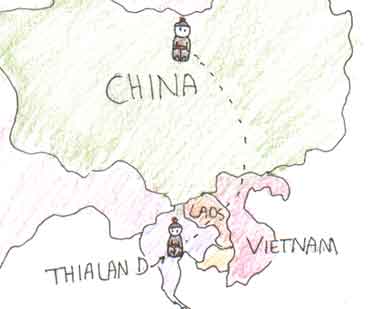The Origin of the Hmong People The Hmongs were known to be the very first people to occupy the fertile Yellow River basin, before the Chinese arrived into the area (Quincy, 13). The Chinese made war with the Hmong and managed to drive them south into the regions Hupeh and Hunan. After many years, in the fourth century, the Hmong had made their own independent kingdom. The Hmong then were scattered out around China when the kingdom fell in the tenth century. After they resettled in the mountains of Kweichow, Szechwan, and Yunnan, they were forced to fight again when the Manchu dynasty waged war of total extermination upon them (Quincy, 4). The anger toward the Hmong by the Chinese was that, the Hmong were unwilling to change their culture and forget all about shamanism. Only a few followed into the Chinese ways, but the majority stayed the same, following the religion that their ancestors had followed for hundreds of years before (Quincy, 4)..
When World War II ended the countries in Indochina begin another war that had the French and Americans involved. Though the war in Vietnam did not extend as far, it also went into the neighboring countries such as Laos, Burma, Thailand and Cambodia (Quincy, 4). In the 17th century the Hmong first made contact with the westerners, the catholic missionaries (Quincy,12) |
||
